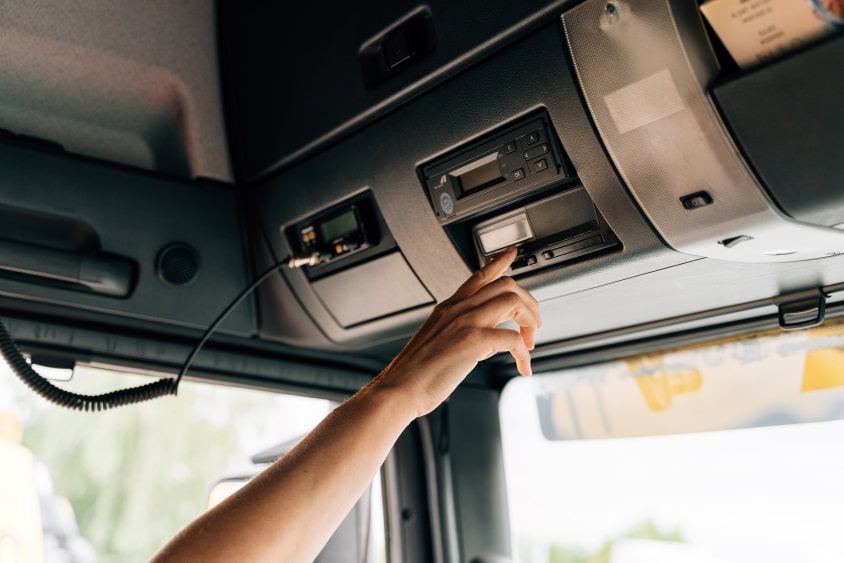Tachographs: Rules, Regulations and Applications
Written by: Simon Pavey, Last updated:10th September 2024

Tachographs are one of the oldest pieces of modern fleet technology, and have become an essential part of effective fleet management. The first tachograph dates back to 1844 and was used on trains to record irregularities, and the ancestor of modern vehicle tachograph can be dated back to 1923.
These devices have seen a great deal of evolution over the years, and today tachographs are a necessary piece of equipment for most fleets. In this blog, we will take a look at what tachographs are, and address some of the legal expectations for fleets to utilise this technology.
What are tachographs?
Tachographs are the devices in telematics systems that track driving time, speed and rest periods, primarily for heavy goods vehicles. Fleet managers can then use the data gathered by tachographs to analyse patterns in driver behaviour and efficiency, and monitor performance.
Software and hardware packages like tachographs work as part of wider telematics systems to help manage driver data efficiently and alleviate the administrative requirements of fleet managers.
Tachographs are a legal requirement in the UK and in countries under EU and AETR laws. They serve to ensure that drivers and businesses are abiding by the standards of road safety, such as the legislation on drivers’.
Tachograph cards
Most tachographs utilise smartcards, of which there are four kinds.
- Driver cards – these store driver information including rest periods, breaks and driving times.
- Company cards – these smart cards are used to download data from the tachograph and protect it.
- Workshop cards – these cards are used for tachograph calibration by the DVSA.
- Control cards – these cards are used by police and transport officers and give access to all information stored on a tachograph.
Analogue tachographs vs digital tachographs
While modern digital tachographs utilise a smart ID card and store data pertaining to each driver on their respective cards, analogue tachographs gather data on pieces of paper which would then be handed back to administrators.
With both types of tachograph, drivers can choose between three modes:
- Other work – for jobs that don’t involve driving, such as loading the vehicle.
- Availability – for delays that would require the driver to wait for production reasons outside their control.
- Break/rest – for when breaks are taken.
All vehicles registered from 2006 onwards are required under EU legislation to use digital tachographs instead of their older analogue counterparts. With digital tachographs offering a more streamlined management of data collection and reducing the risk of lost data with physical paper sheets, the more modern form of tachograph is a more effective tool for fleets today.
Tachograph rules and regulations
As tachographs are used to track driving hours and behaviour, rules and regulations associated with tachographs are mostly aligned with the time drivers can spend on the road and rest requirements rather than regulations relating to the tachographs themselves.
However, commercial vehicles are required to have a tachograph to ensure compliance with regulations on drivers’ hours, unless the vehicle is exempt from EU regulations on drivers’ hours or isn’t covered by them.
As of August 2023, legislation came in that requires newly registered passenger and goods vehicles to have a smart tachograph v2 installed. Smart tachographs offer benefits including enhanced security and efficiency, and an open interface for integration with other fleet solutions.
Fleet solutions from Fuel Card Services
Tachographs are part of the foundation of fleet services, and they have evolved a lot in the last 100 years. This invaluable tool is a fleet essential and when used in conjunction with a suite of other fleet solutions fleet managers can enjoy comprehensive driver tracking and data management.
At Fuel Card Services we are specialists in fleet management solutions. We offer a diverse range of fleet management tools including telematics systems and driver tracking software, dash cameras and more. These devices, apps and software are fully flexible meaning you can build your system around your fleet’s needs.
Our experts are on hand to help you choose the right fleet solutions, so don’t hesitate to get in touch today for a no-obligation chat.
back


